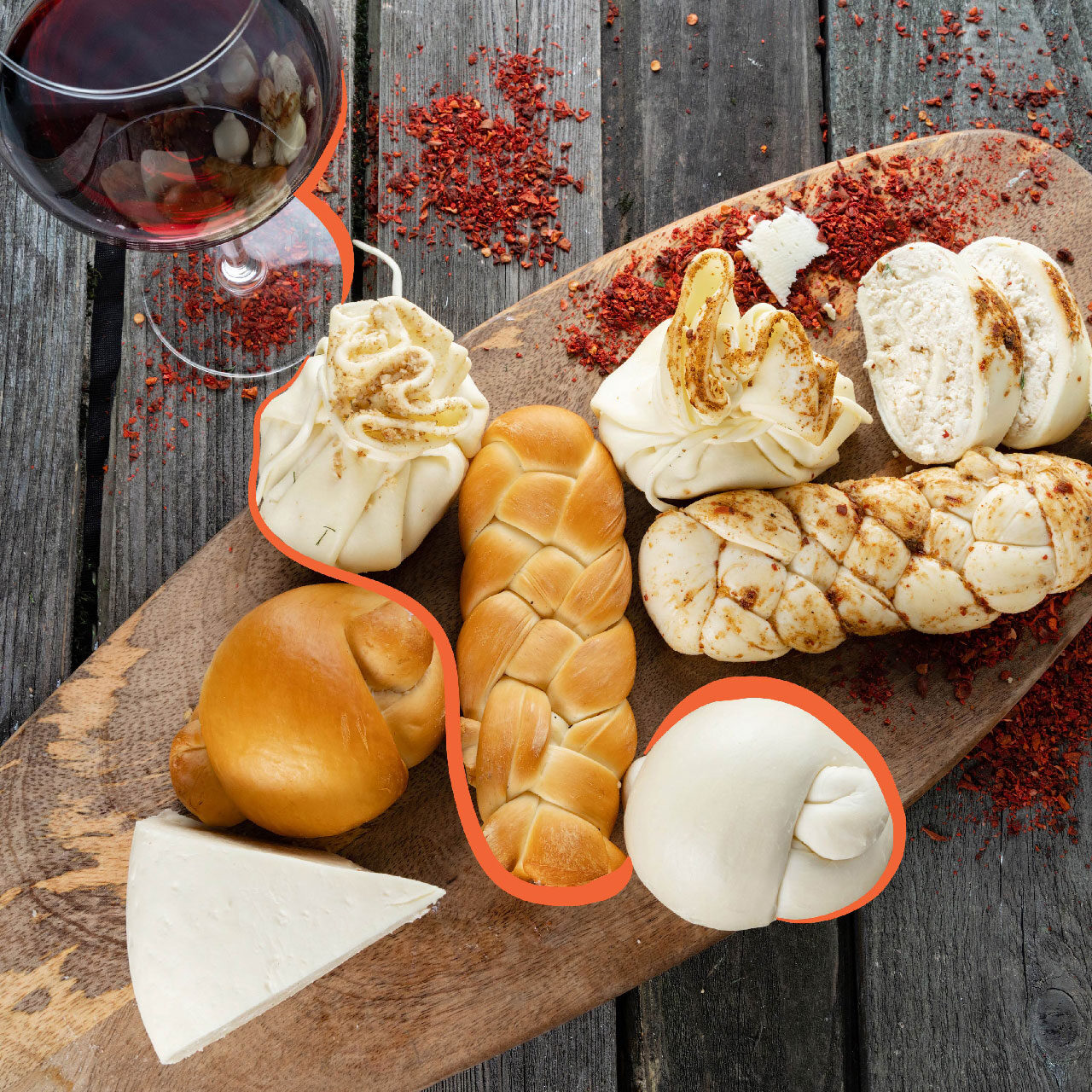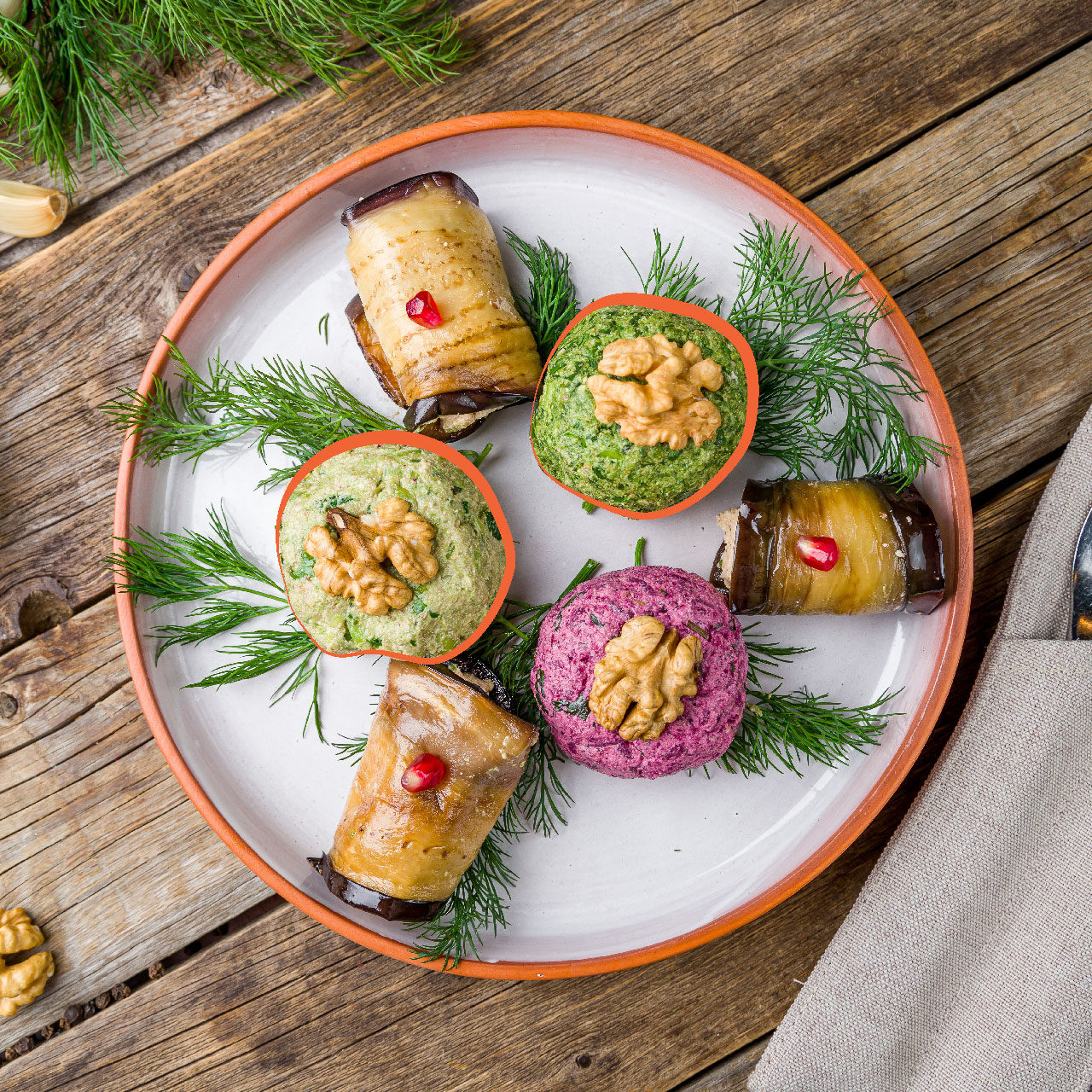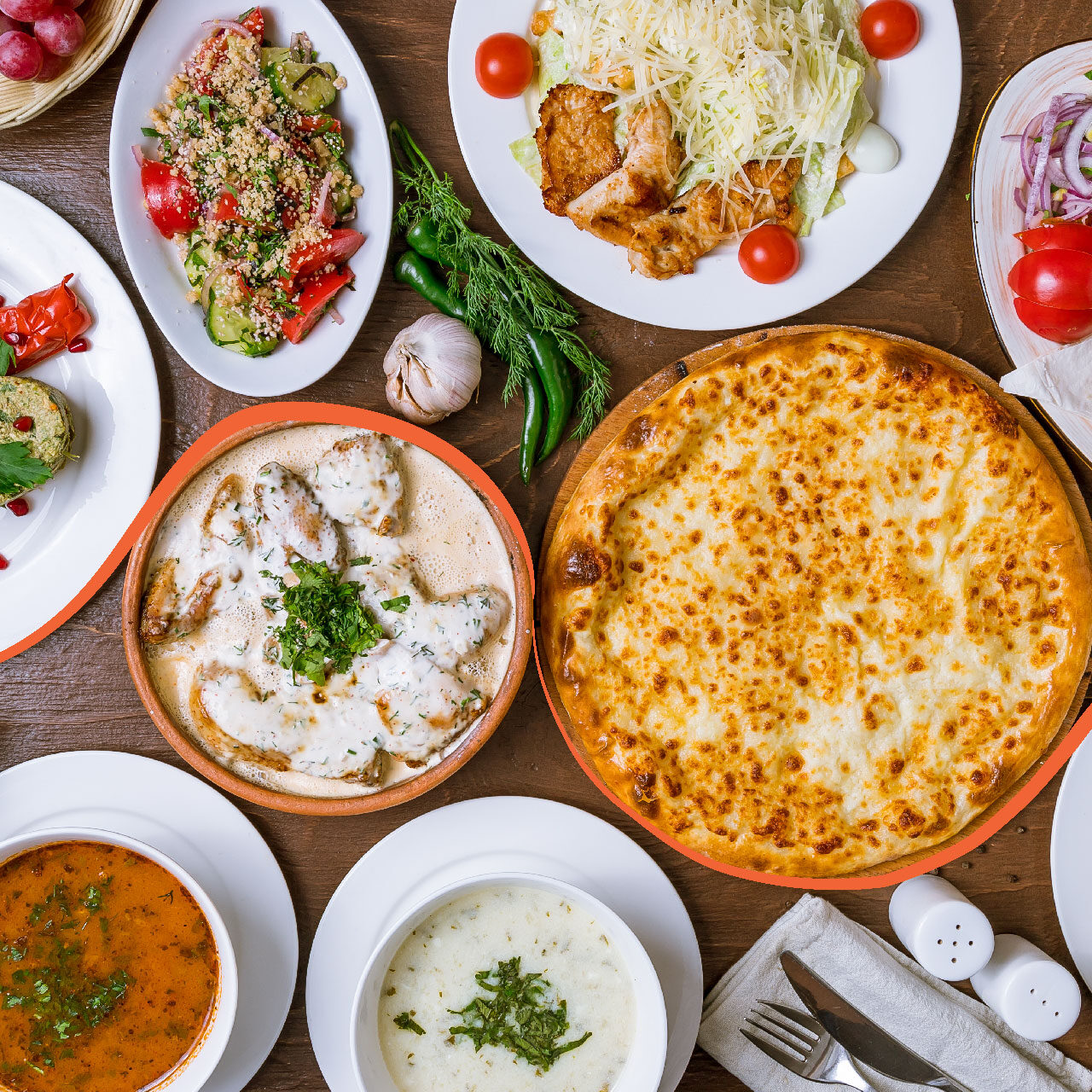Foods & Feasting
Traditions that warm the heart and fill the soul
The foods and flavors of Georgia reflect the country’s geographic setting—what food writer Darra Goldstein calls a “Shangri-la of bounty, tucked away in mountain valleys and fertile lowlands.”
Despite its seemingly remote location, Georgia once occupied a much more well-known place in the world. For centuries, it served as a stop on East–West trade routes. As traders passed through, the Georgians borrowed and assimilated the flavors and aromas of visitors’ culinary traditions. Centuries of foreign invaders also left their mark on the local cuisine. Georgian dishes now incorporate flavors and influences from the foods of Iran, Asia, Turkey, and the Mediterranean. And over time, each Georgian region has developed its own distinctive contributions to the country’s culinary identity.
Traditional Georgian cuisine combines fresh meats, fresh vegetables, herbs, and spices into distinctly flavorful dishes that are considered among the healthiest in the world. Whether prepared for a celebratory supra or for an everyday meal, Georgian cuisine always finds its most authentic expression at home, among friends.
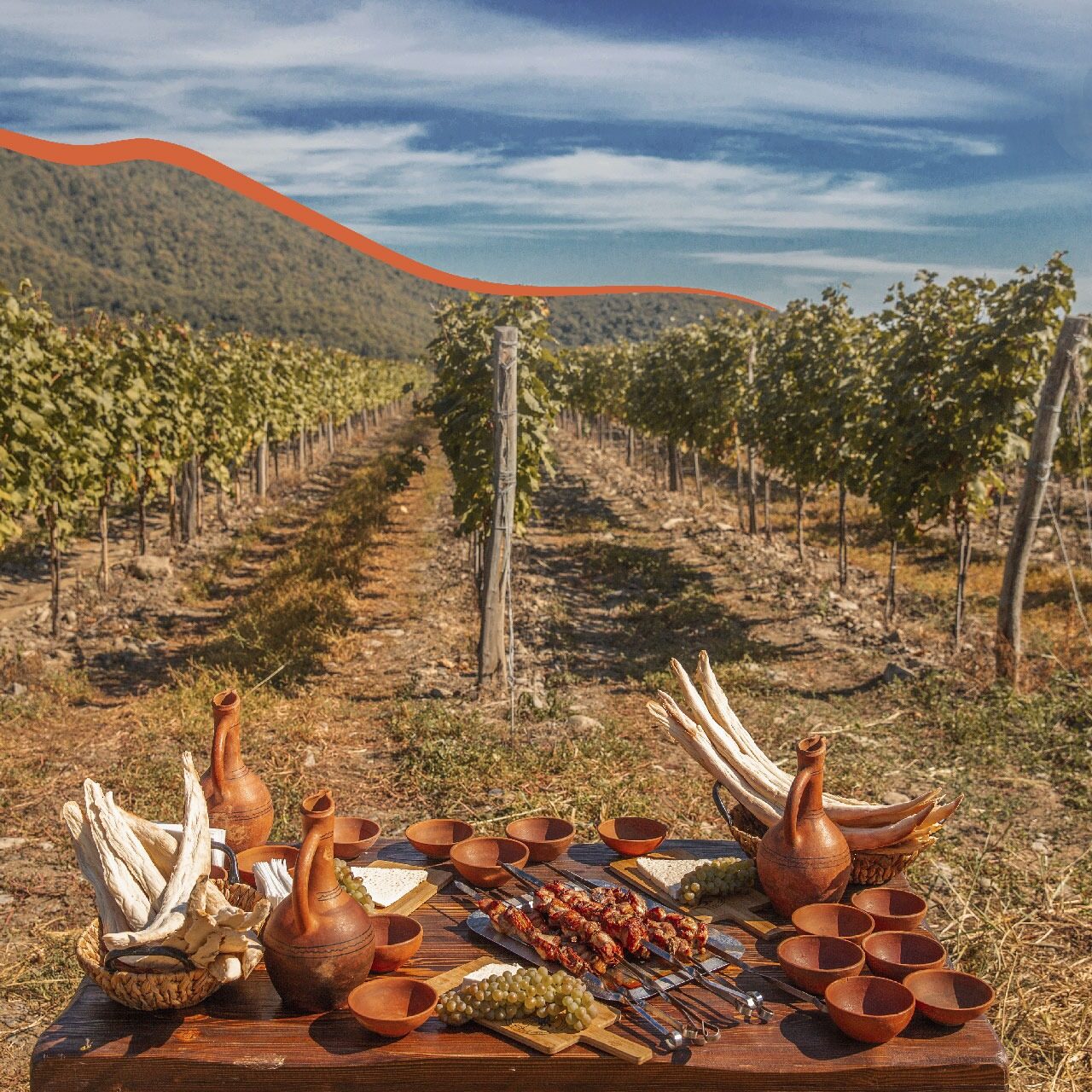

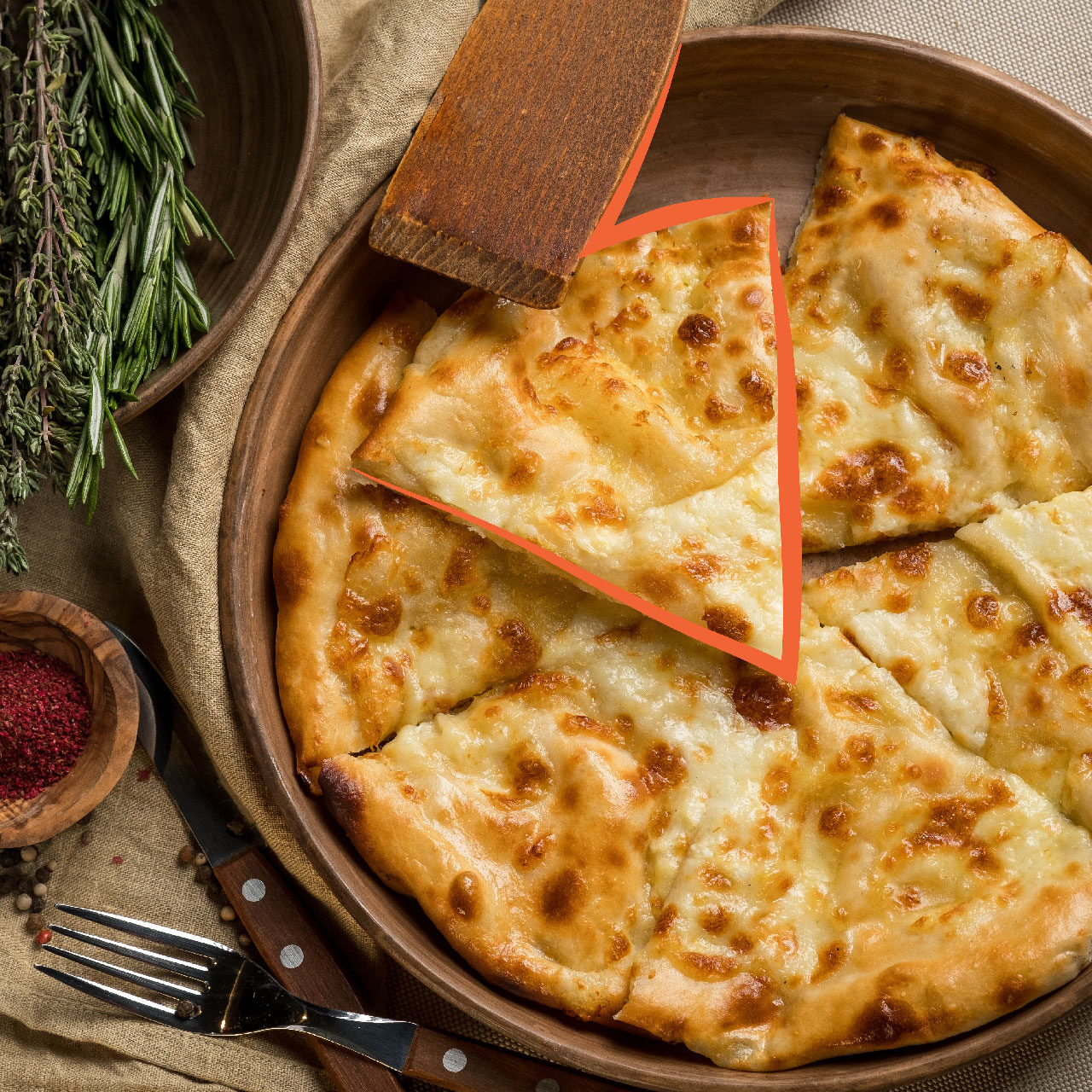
Supra: More than a feast
The supra is a traditional, often extravagant, Georgian meal that occupies the center of Georgian social life. Far more than a celebratory feast, it’s a tradition for the ages, a religious rite, and a national identity all in one. For all of life’s celebrations—births and birthdays, homecomings and anniversaries, weddings and funerals—there’s a supra.
The supra gets its name from the Georgian word for tablecloth—the space the feast’s dishes will cover. During a supra, food and wine are seemingly endless, and the plates pile up several deep to ensure that the table is full.
Though parts of the meal will vary from family to family and some elements differ depending on the occasion for a particular feast, many supra traditions are universal. Those rituals have formed a shared Georgian community, identity, and spirituality over generations.
Perhaps the most essential ritual is the presence of a tamada, or toastmaster, who leads the toasts around which the supra feast revolves.
A skilled tamada effectively evokes the spirit of shared community and culture, which for many Georgians has deep associations with wine. The tamada begins every supra with a trio of toasts—first to the motherland, then to God, then those in the room considered closest to divine: the guests. Georgian culture values hospitality above all, with guests seen as heaven-sent gifts deserving great honor.
As the feast unfolds, so do the toasts. Each round begins with a toast by the tamada, who empties his glass. Guests follow suit, often answering with toasts of their own in keeping with the theme of the round. Meanwhile, courses of food appear, each more substantial than the one before—herb salads, bread with spreads, khachapuri (cheese bread), roasted meats, vegetables, sweets—until the table is piled high with plates.
More than simply a feast, the supra fosters deep connections among those who break bread together. It cultivates an intimacy that knits them to one another and to the generations who have feasted and toasted and celebrated before them.
The Ultimate Comfort Food:
Khachapuri
A bread in a category all its own, khachapuri inspires near-addiction in visitors who try it. Piping hot, oozing with cheese and butter, and made with love, khachapuri is an indulgence that isn’t soon forgotten. It’s Georgia’s national dish, more popular than pizza.
The recipe is simple: Leavened dough is left to rise; then it’s shaped, filled with cheese, and baked until blistered and bubbling. To eat it, tear off a piece crust and dip it in the warm, cheesy center.
Khachapuri’s simple recipe leaves plenty of room for interpretation—there are nearly as many variations as there are regions in Georgia. The two most common styles are a round version from Imereti and an elongated, boat-shaped version from Adjara, which is topped with a raw egg and extra butter when it’s hot from the over.
Khachapuri is available practically everywhere in Georgia—restaurants, specialty shops, open-air markets, and even the Tbilisi airport. As this decadent treat gains popularity around the world, it’s becoming easier for North Americans to find at home.
Georgia’s Favorite Finger Food:
Khinkali
A close rival to khachapuri for the title of Georgia’s national dish is khinkali. These traditional dumplings are made of dough wrapped around a savory meat filling. Khinkali likely originated in Georgia’s mountain regions, though many parts of the country now claim their own versions.
The most common filling is a juicy mixture of beef and pork. Tbilisi’s dumpling houses add cilantro, chili, and onion to the mix. Other khinkali fillings include lamb, cheese, mushroom, and mashed potato.
Finger food in the truest sense of the word, khinkali are traditionally eaten without utensils. Although eating khinkali can be a messy affair, it is a culinary experience that is distinctly Georgian and an essential part of the country’s food culture.
